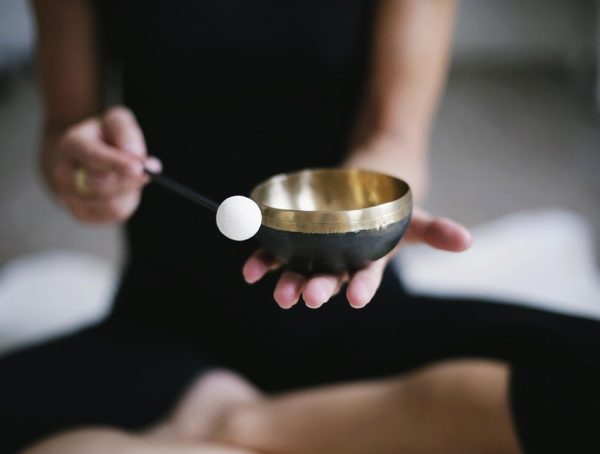From Anxiety to Serenity: The Healing Power of Meditation
In a world where the pace of life is quicker than ever, anxiety has come to be a common experience for many. Between juggling work responsibilities, family obligations, and social commitments, our minds are bombarded with an endless stream of information and tasks that can leave us feeling overwhelmed. However, amidst this chaos, there is a powerful tool that can help transform anxiety into serenity: meditation.
Understanding Anxiety
Anxiety is not just a fleeting emotion; it’s a mental health issue that affects millions worldwide. It can manifest in various ways, including excessive worry, panic attacks, and debilitating phobias. Understanding that anxiety is a normal reaction to stress can be empowering. Yet, when it starts to interfere with daily life, finding effective strategies for coping becomes essential.
The Science Behind Meditation
Meditation is the practice of focusing the mind and eliminating distractions, a form of mental exercise that promotes relaxation and clarity. Numerous studies have revealed that meditation can significantly reduce symptoms of anxiety. According to research published in JAMA Internal Medicine, mindfulness meditation programs can provide substantial improvements in anxiety, depression, and pain.
The Mechanism
Meditation activates the body’s relaxation response, which counteracts the physiological effects of stress. This response slows the heart rate, decreases blood pressure, and alters brain waves, making the mind calmer. The practice has been shown to reduce the production of cortisol, the stress hormone, leading to a decrease in anxiety symptoms.
Transitioning from Anxiety to Serenity
Now that we understand the healing potential of meditation, let’s explore how to incorporate this practice into your life effectively.
1. Creating a Dedicated Space
Designate a peaceful spot in your home where you can meditate without interruptions. This may be a corner of your living room, a cozy nook in your bedroom, or even a quiet spot in a nearby park. Ensure it’s a place where you feel comfortable and relaxed.
2. Start Small
If you’re new to meditation, it can feel daunting. Instead of setting lofty goals, begin with just five minutes a day. Gradually increase the duration as you become more comfortable. Consistency is more important than duration. It’s better to meditate for a few minutes daily than to do long sessions sporadically.
3. Focus on Your Breath
Breath is a powerful anchor in meditation. Close your eyes and take deep, slow breaths. Inhale through your nose, allowing your abdomen to fill with air, and exhale slowly through your mouth. Focus on the sensation of your breath entering and leaving your body. If your mind wanders, gently bring it back to your breath without judgment.
4. Explore Guided Meditation
If you find it tough to meditate alone, consider using a guided meditation app. There are many options available, such as Headspace, Calm, or Insight Timer. These apps offer a range of meditations tailored to various needs—whether you seek relaxation, focus, or stress relief.
5. Embrace Mindfulness in Daily Life
Meditation doesn’t need to be confined to a designated time or space. You can incorporate mindfulness into your everyday activities. Whether you’re washing dishes, walking, or eating, engage fully with the experience. Notice the sensations, sounds, and smells, allowing yourself to be present in the moment.
6. Cultivate Patience
Change doesn’t happen overnight. Allow yourself the grace to progress at your own pace. Some days will be easier than others, and that’s okay. Meditation is a skill that improves with practice. Be patient with yourself and acknowledge the small victories along the way.
7. Join a Community
Consider joining a meditation group or class. Many communities offer local sessions, and online platforms also have virtual meditation groups. Sharing the experience with others can provide additional motivation and support.
Conclusion
Transforming anxiety into serenity through meditation is not just an idea; it’s a journey of healing. By incorporating the described action steps into your daily routine, you can pave the way to a calmer, more centered life. As you begin this transformative practice, remember that you are not alone on this journey. Many are seeking the same peace you desire, and we all share the capacity for personal growth.
As you cultivate a daily meditation practice, take note of the changes in your mental well-being. You may find that moments of anxiety become less frequent and that your overall mood improves.
The path may not always be smooth, but every step taken towards mindfulness is a step towards serenity.
As you embark on this journey, let these words resonate with you:
"Peace comes from within. Do not seek it without." – Buddha
For more tips and insights on health and wellness, be sure to follow Kevin on Instagram @KSteineman for daily inspiration and motivation!
You might also like
More from Meditation
The Role of Mantras in Transcendental Meditation: A Deep Dive
The Role of Mantras in Transcendental Meditation: A Deep Dive Transcendental Meditation (TM) has garnered a significant following across the globe, …
The Science Behind Meditation: Improving Mental Health Naturally
The Science Behind Meditation: Improving Mental Health Naturally In today's fast-paced world, the pursuit of mental wellness has become paramount. Thousands …
Understanding the 7 Types of Meditation for Beginners
Understanding the 7 Types of Meditation for Beginners: A Path to Inner Peace Meditation has become a popular practice in recent …

































